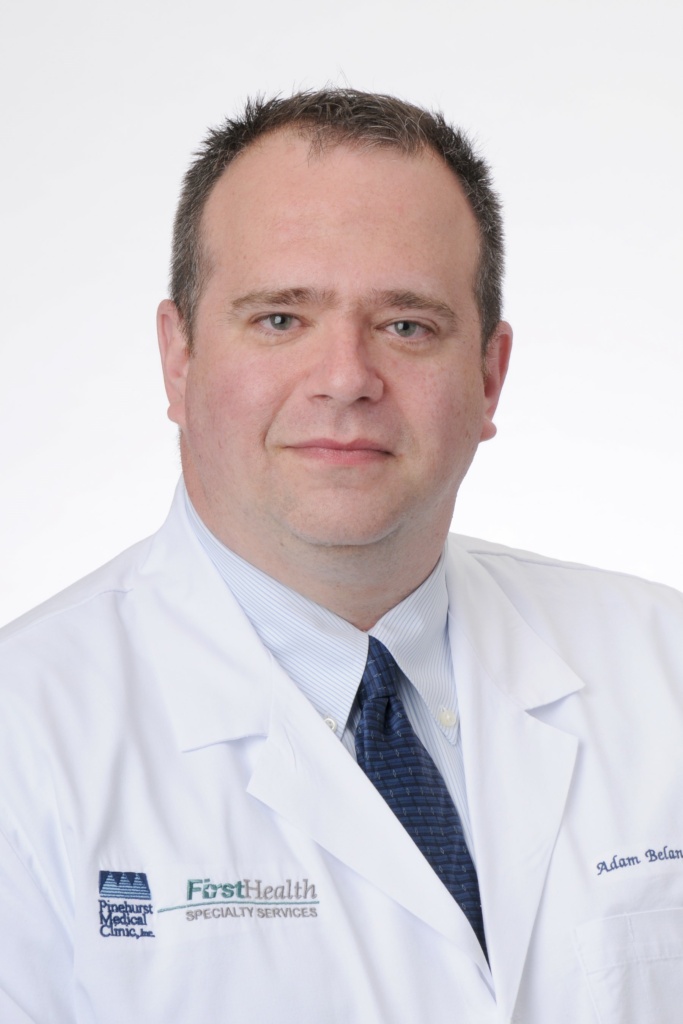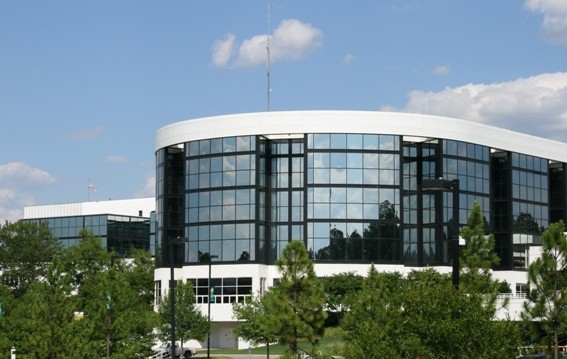Revolutionary lung valve is the first FDA-approved device to help emphysema patients breathe easier without major surgery
FirstHealth of the Carolinas is the first in the region to offer a new lung valve treatment for patients with severe COPD/emphysema. Recently approved by the FDA under their “Breakthrough Devices” status, the Zephyr Endobronchial Valve treatment represents a major advancement because it is the first minimally invasive procedure to help emphysema sufferers breathe easier without major surgery. Done through a simple bronchoscopy, the valves improve patients’ quality of life by allowing them to breathe easier, be less short of breath, and be more active and energetic.
“We are very excited to have this new treatment option because emphysema patients are often in poor physical condition, struggling with each breath despite medication therapy,” said Adam Belanger, M.D., fellowship-trained interventional pulmonologist with FirstHealth Specialty Services and Pinehurst Medical Clinic. “Before the Zephyr Valves, the only options for relief were highly invasive treatments including lung surgeries. Being able to offer this minimally invasive procedure has the potential to improve the quality of life for many emphysema sufferers in the Sandhills area and beyond.”

Emphysema is a progressive and life-threatening lung disease, and a severe form of COPD (chronic pulmonary obstructive disease). There is no cure and patients live with severe shortness of breath that keeps them from doing simple daily activities like walking, or taking a shower, without pausing to catch their breath or resting. This extreme shortness of breath is caused when air becomes trapped in parts of the lung that are damaged by the disease.
The one-time procedure is done during a simple bronchoscopy, which requires no cutting or incisions. During the procedure, on average, four tiny valves are placed in the airways to block off the diseased parts of the lungs where air gets trapped. Keeping air from getting trapped in the diseased parts of the lung allows the healthier parts of the lungs to expand and take in more air. This results in patients being able to breathe easier and have less shortness of breath.
Dr. Belanger joined Michael Pritchett, D.O., MPH at FirstHealth Specialty Services and Pinehurst Medical Clinic on May 1. Originally from Vermont, Dr. Belanger earned his undergraduate degree from Boston University and attended medical school at Mount Sinai School of Medicine in New York. He completed an internal medicine residency at Washington University in St. Louis. Recently at the University of North Carolina at Chapel Hill, Dr. Belanger completed a fellowship in pulmonary and critical care medicine as well as additional training in interventional pulmonology. To learn more about the Zephyr Valves or to make an appointment with Dr. Belanger, call (910) 295-9359.
More on the Zephyr Valves:
The Zephyr® Valves were fast-tracked through the FDA’s “Breakthrough Device” status because they “offer bronchoscopic lung volume reduction without surgery and its associated risks.” The FDA’s approval was based on the results of four randomized controlled clinical trials, including the US approval study, LIBERATE. Data from the study showed that implantation of the Zephyr Valves successfully reduced shortness of breath while improving lung function, exercise capacity, and quality of life. 1 These benefits lasted at least one-year post-treatment for patients with severe emphysema.
The Zephyr Valves were approved by the FDA in July 2018. Since 2007, more than 15,000 patients have been treated with The Zephyr Valve worldwide. Zephyr Valve treatment is included in emphysema treatment recommendations issued by leading health organizations worldwide, including the Global Initiative for Chronic Obstructive Lung Disease (GOLD) and the UK’s National Institute for Health and Care Excellence (NICE).
More about COPD and Emphysema
More than 15 million Americans suffer from COPD, and 3.5 million of those patients have emphysema.2 Despite using COPD medications, over one million emphysema patients continue to suffer symptoms of hyperinflation, in which air becomes trapped in the lungs and prevents new air from coming in, causing severe shortness of breath. Breathing becomes inefficient and patients have to work very hard just to breathe – making normal activities, like walking, eating or even bathing, difficult. There are few treatment options for most patients with emphysema and there is no cure. Until now, the only other options for these patients were highly invasive treatments such as lung volume reduction surgery or lung transplantation.













